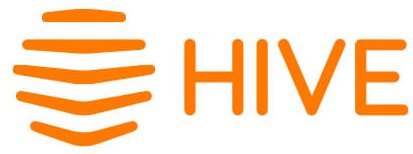Northumbrian Water


Background
Northumbrian Water have set themselves an ambitious Per Capita Consumption (PCC) target of 118 litres of water per person per day by 2040. To achieve this target, they had to tackle their highest water using customers. These customers use a staggering 290 litres per person per day, or more (the average PCC is around 150 litres per person per day in the UK).
In 2022, Northumbrian Water implemented a new water reduction strategy that was rooted in behavioural science. Customer research was conducted on the ‘Top 5%’ of water users to gain a deeper understanding of how they differ as a group from general users in the area. Based on these insights, the water company trained their qualified plumbers in delivering impactful and meaningful behaviour change strategies tailored to heavy water users. This approach aimed to create a sustained reduction in their water usage.
The next challenge was to motivate these heavy water users to sign up for a water saving home visit with a qualified plumber.
Solution
Northumbrian Water used personal, tailored messaging to contact and engage the top 5% of water users and get them to book a visit. A contact strategy of three, phased communications were implemented across either mail or email, depending on the user’s billing preference.
The first communication in the mail contact strategy to the heavy user household was a ‘pre-mailer’ postcard. It conveyed the importance of water conservation and highlighted the household’s significant water usage, encouraging them to sign up for a visit with Northumbrian Water plumbers. Behavioural science was seeded throughout the messaging, including a behavioural contract that invited the householder to ‘take the pledge’ and a social comparison – ‘we think you are using more than your neighbours’.
Next, an ‘invitation’ mailer was sent. This spoke in detail about the householder’s problematic water usage, why it was important to change and why they should book a visit with the plumber in their area to see how to reduce their water usage.
As part of the messaging two behavioural science approaches were tested in the letter. One approach focused on an environmental framing of the messaging, highlighting the carbon savings achievable by reducing water usage and how beneficial for the environment that would be. The other approach employed financial framing, showcasing the potential cost savings that could be achieved through active water conservation.
Both letters included a compelling call to action – ‘Don’t miss out! Other households in your area are taking part and are making a difference.’ – that, again, was rooted in social norming and instilled a sense of urgency.
Initial analysis of the test results showed no significant difference between the two behavioural science message framings in terms of influencing visit uptake. Leveraging this insight, a third invitation letter approach was developed that included both environmental and financial messaging within the body copy. However, this time the headline of the letter employed a problem-solving approach - ‘We’re worried about your water use. Can we help?’. This immediately outlined issue and showed that Northumbrian Water had the solution. The body copy of the letter opened with a social comparison, specifically pointing out the recipient’s higher water usage compared to their neighbours.
For households that had not yet booked a plumber visit, a reminder postcard was sent a few weeks later. Social norming was once again employed, urging the named householder to ‘Join others in your area’ who had already booked their free water-saving visit and were successfully conserving water and saving money. The call to action was framed with a sense of urgency, informing the recipient that the team would be available in their area for the next two weeks, thereby motivating them to take immediate action.
To measure the impact of the visit, Northumbrian Water collected three meter reads along the way. One two weeks or more before the plumber visit, one during, and one two weeks later. The data collated from this was used to determine the level of water savings achieved from communciations and plumber visit.
Results
Through the implementation of this multi-stage mail contact strategy, rooted in behavioural science principles, Northumbrian Water successfully engaged heavy water users and encouraged them to take part in water conservation efforts.
The mail campaign drove a 10% take-up of plumber visits. On top of this, an average measured water saving of 26 litres per property per day was achieved - an uplift on the average savings achieved in previous campaigns.
Mail was more successful in stimulating plumber bookings than email. Letters generated a 10% uptake in plumber visits, email generated a 7% uptake.
“Mail is very effective for us. Because we are focusing on high users, we wanted to create something that was personal and written on paper. Something that they could hold, think about, and return to. A mailing lands on their doormat and makes an impact. It is something they can’t ignore.”
Source: Louise Richardson, Water Efficiency Analyst, Northumbrian Water




